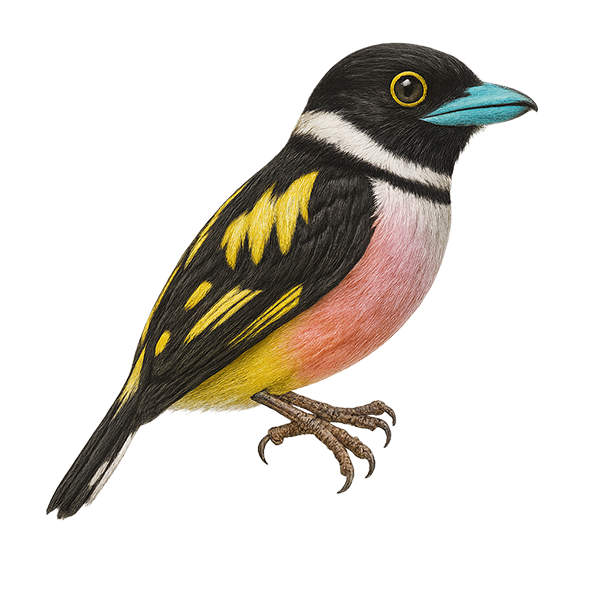Your wildlife photography guide.
Explore the black-and-yellow broadbill in detail, study its behavior, prepare your shots.
Where to observe and photograph the black-and-yellow broadbill in the wild
Learn where and when to spot the black-and-yellow broadbill in the wild, how to identify the species based on distinctive features, and what natural environments it inhabits. The WildlifePhotographer app offers tailored photography tips that reflect the black-and-yellow broadbill’s behavior, helping you capture better wildlife images. Explore the full species profile for key information including description, habitat, active periods, and approach techniques.
Black-and-yellow Broadbill
Scientific name: Eurylaimus ochromalus

IUCN Status: Near Threatened
Family: EURYLAIMIDAE
Group: Birds
Sensitivity to human approach: Suspicious
Minimum approach distance: 10 m
Courtship display: March to June
Incubation: 18-20 jours
Hatchings: March to July
Habitat:
Tropical forests, secondary forests, mangroves
Activity period :
Primarily active during the day, with peak activity in the morning and late afternoon.
Identification and description:
The Black-and-yellow Broadbill is a captivating bird, easily identifiable by its vibrant plumage and distinctive black cap. It primarily inhabits the tropical forests of Southeast Asia, where it feeds on insects and fruits. Its melodious song and vivid colors make it a favorite among birdwatchers. This bird is often seen in pairs or small groups, moving nimbly among the branches. Although its habitat is threatened by deforestation, it remains relatively common in some areas. The Black-and-yellow Broadbill builds hanging nests, often over water, to protect its eggs from predators.
Recommended lens:
400 mm – adjust based on distance, desired framing (portrait or habitat), and approach conditions.
Photography tips:
To photograph the Black-and-yellow Broadbill, it's advisable to use a telephoto lens of at least 400mm to capture precise details without disturbing the bird. Look for areas where these birds are active, such as forest edges or near water bodies. Be patient and discreet, as this bird can be suspicious. Use a tripod to stabilize your camera and wait for the right moment to capture its vibrant plumage in natural light.
The WildlifePhotographer App is coming soon!
Be the first to explore the best nature spots, track rutting seasons, log your observations, and observe more wildlife.
Already 1 429 wildlife lovers subscribed worldwide

